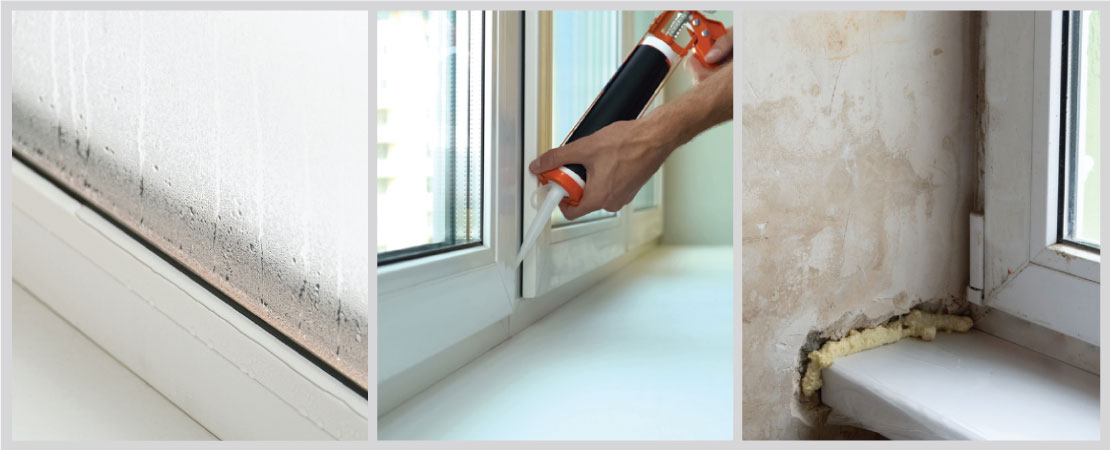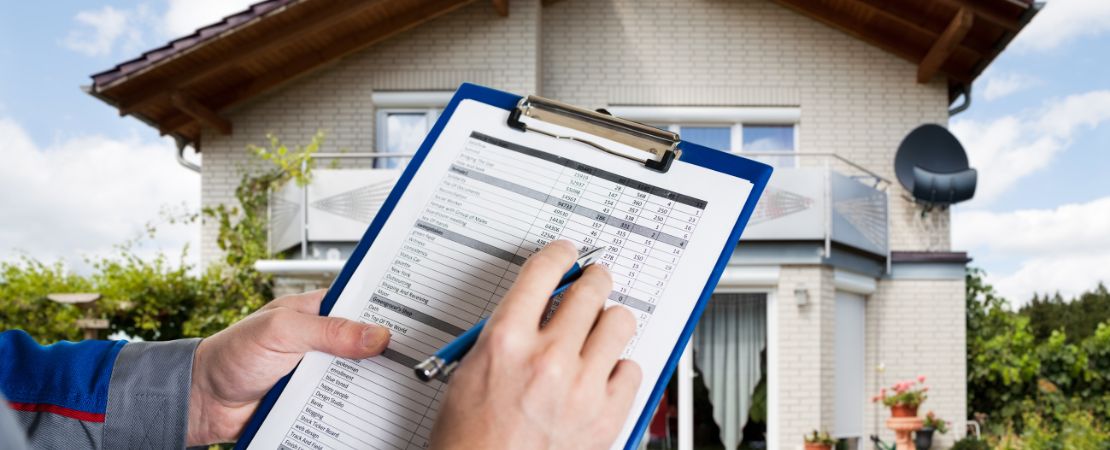Keeping your home healthy is of paramount importance as it directly impacts the well-being of you and your family. A healthy home fosters physical health by providing clean air, free from pollutants & allergens that can lead to respiratory issues. It also plays a vital role in preventing the spread of infectious diseases through regular cleaning and hygiene practices. Moreover, a well-maintained home ensures safety and reduces the risk of accidents or injuries, giving you peace of mind and a sense of security.
A healthy home is not only beneficial for your family’s physical health but also contributes to your mental and emotional well-being. A clutter-free and organized living space promotes a positive mindset and reduces stress. It becomes a place where you can relax and rejuvenate after a long day, fostering a happier and more contented lifestyle.
Additionally, maintaining your home’s health can lead to long-term cost savings. By addressing small issues promptly and performing regular maintenance, you can prevent major problems that may require expensive repairs in the future. Moreover, a well-maintained home retains its value better over time, ensuring that your investment remains sound.
Performing a health check on your home is essential to ensure a safe and healthy living environment.
Here’s a step-by-step guide on how to do a health check on your home:

1. Regular Inspection
- Inspect your house or apartment regularly for any signs of damage or maintenance issues.
- Address any problems promptly to prevent them from escalating.

2. Ventilation
- Keep your home well ventilated by opening windows or doors regularly.
- Consider using air purifiers with HEPA filters for improved air quality.

3. Check to Avoid Mould
- Allow your home to breathe to prevent mould growth.
- Check for any signs of mould and take immediate action to remove it.

4. Get Rid of Damp
- Address any leaks or seepage problem promptly to avoid dampness.
- Consider using a dehumidifier to reduce humidity levels.

5. Regular Cleaning
- Clean your home regularly to keep it free from dirt, dust, and allergens.
- Use natural and biodegradable cleaning products for a healthier environment.

6. Pest Control
- Seal cracks and fissures to prevent pests from entering your home.
- Keep food stored properly and use traps or baits if necessary.

7. Avoid Toxic Chemicals
- Use natural & biodegradable cleaning products, minimize exposure to strong chemicals.
- Introduce indoor plants to improve air quality and create a more pleasant environment.
By incorporating these practices into your home routine, you can create a healthy living environment that promotes physical well-being, mental clarity, and a sense of peace for you and your family. Let us review a look into the checklist to ensure your home remains a healthy haven.
Assessing Your Home’s Health – An Essential Checklist
The sentiment “home is not a place, it is a feeling” resonates with many, as owning a house brings a sense of security and accomplishment. However, the emotional connection to a new home can sometimes cloud the judgment of homebuyers, causing them to overlook potential issues or defects. Often, buyers focus more on location, rates, facilities, and size rather than thoroughly inspecting the property.
For those who have recently purchased a new or used resale home or apartment, a home inspection becomes crucial. This inspection ensures that everything within the house is functioning properly and identifies any necessary repairs. A thorough examination helps homeowners become aware of potential hazards or future problems and provides solutions to address specific issues, ultimately ensuring a healthy and safe home environment for their families.
The benefits of a comprehensive 360-degree home inspection are long-lasting. Areas such as bedrooms, bathrooms, living and dining spaces, kitchens, balconies, etc., are assessed for their health, safety & integrity and overall condition. The inspection focuses on seven fundamental elements found in all areas: walls, ceilings, flooring, doors, windows, electrical and plumbing systems.

1. Walls
Walls are often ignored by homeowners. Wall is a continuous vertical member used to sometimes transmit load from beam to floor. It plays a significant role in a home. Having Wall Inspection done addresses you errors or issues before they become major problem. Essential points which are checked and generally observed on the wall:
- Cracks on the wall: Fluctuation in moisture and temperature causes constant expansion and shrinkage of concrete. Various types of cracks in building mostly take place during or after construction. The cracks in building may be structural cracks or non-structural cracks depending on its nature. Read The causes of cracks in your house.
- Defects depending on finish: There are different finishes at different stages of construction. Defects can vary depending on the stage of inspection. Different finishes can be plaster, putty and paint.
- General defects on plastered surface are crazing, separation crack at joints, efflorescence and hollowness on plastered surface, Flaking & peeling off plaster, loose plaster, undulation etc.
- General defects at putty finished wall are Surface damages, undulation, uneven, popping, peeling etc.
- General defects at paint finished wall are uneven finish, undulation, popping, peeling, discolouration etc.
- Dampness or Moisture on Wall: Flaking, popping, peeling, discolouration etc are visual signs of moisture. To get it rectified, it is important to detect the source of dampness and moisture through advanced technology. If not treated at the right time, this will lead to further deterioration.
Apart from this, waterproofing is checked in wet areas depending on the stage of inspection.

2. Ceiling
A ceiling is an overhead interior surface of a room or compartment. It can be made of RCC or masonry finish or can be a false ceiling. The Checklist varies depending on the type of material. Unevenness, undulation, crack, and other surface damages are commonly checked in most types. Similar to walls, visual signs of moisture or water stains, seepage are checked too in ceiling. Identifying the root cause of stain or other forms of moisture is the important step in dealing with it.

3. Flooring
When you enter your house, flooring is the first element you feel. Flooring adds to beauty of the room. There are various types of flooring materials – tiles, marble, mosaic, Neat cement flooring etc. Considering common flooring (tile), our checklist includes: Checking Hollowness on tile, cracked/broken tile, gap at tile joints, skirting fitted or not, slope at wet areas, etc. These points have their separate significance to check. Like it is necessary to check any hollow tiles present in flooring or dado. If there is any, then it can crack or get damaged on regular use. This can lead to seepage or other moisture-related problems. Similarly, gap at tiles and the incorrect slope will lead to seepage and other deterioration. So, to avoid major cost and have hassle-free homes & living, it is essential to check floors properly.

4. Doors
Doors play a significant role in the security of your homes. A door is a gateway and keeping that gateway strong and secure is a key factor in maintaining good home safety & security. Cracks at the frame, the gap between frame and wall, presence of borer or termite, firmness & stability, operation & functioning, alignment, other visual checks etc. are the main pointers in the checklist. The door is properly inspected for damaged, missing, and uneven fittings.

5. Windows
Windows are very important element for efficiency, security and appeal of your home. Apart from this, Windows provide our homes with light, warmth, and ventilation. Windows connect your home to the outer world. It is very essential to inspect your windows before you move in. Main pointers in the checklist: gap around windows frame, window installation, operation & function issue, window sill height, drip mould at chajja, etc. If there is a gap around window frame (may be due to sealant deterioration or sealant not provided), air seeping in and out of these gaps affects the energy efficiency of your home and also allows the moisture to enter inside the house which can cause severe damage to the property in future. Similarly, Chajja without drip mould may seem like a minor thing but it can let rainwater to enter home and can cause seepage problems and create hassles.

6. Electrical and Fixtures
A proper electric system functioning is an important factor for healthy and safe homes. An electrical inspection implies to detailed inspection of the electrical connections, wiring and basic electrical fixtures installed in your home. Electrical Safety is our first priority during inspection. Key parameters (checklist of our inspection) include:
- A thorough inspection of the electrical wiring system which includes detailed wiring connection & Wire Gauge.
- Inspection of each and every switch / socket boards – Operation and wiring.
- Position of installation of the electrical fan, light points, switch & socket boards.
- Ensuring a home free of electrical shock & electrical accident, and better service life of electrical equipment along with electrical safety.
- Checking the functionality of RCCB/MCB, inadequate wire provision, improper earthling, loose connection, etc.
Apart from this need-based DB / MCB charting (Value-added service that comes with every inspection giving you details of load distribution from each MCB).

7. Plumbing and Fixtures
A plumbing inspection is an important part of the entire inspection process. A professional inspection can save home buyers from future inconvenience and expenses. Taking care of your home’s plumbing system is essential to keeping the clean water flowing in and flushing your home’s waste out. Few pointers of the checklist are – Checking leaky faucets & pipes, blockage in the drain, water pressure, plumbing trap condition, the gap around drain outlet, water draining properly through outlet etc.
Nobody wants to enter a home to encounter leakage, seepage, damps, and other problems regarding moisture. You can also Check out 7 Plumbing Mistakes in Your New Home.
Apart from the above brief checklist of basic elements, identifying unsafe areas of a home is also important. We can also inspect exterior common areas like lobby area, roof etc. and fire safety depending on the requirement.
Last Words
In conclusion, a home inspection is an invaluable process that provides homeowners with a clear picture of their property’s condition. By identifying and addressing shortcomings early on, the inspection minimizes investment risks and ensures a safe and healthy living environment. Therefore, it is highly recommended to get your home or property inspected to enjoy a worry-free and secure living space.
Ultimately, your home is your sanctuary, and its health reflects directly on your quality of life. By taking care of your home, you can create a heaven where your family can thrive and flourish, promoting a healthier and happier lifestyle for everyone involved.
Internal Reference Link :
1. https://macj-abuyerschoice.com/you-should-not-miss-part-2-concept-video-healthy-homes/
2. https://macj-abuyerschoice.com/8-moisture-warning-signals-in-your-home/
3. https://macj-abuyerschoice.com/every-new-home-is-not-necessarily-perfect/
4. https://macj-abuyerschoice.com/new-home-7-things-you-must-do-during-the-first-week/
5. https://macj-abuyerschoice.com/home-inspection-learn-basics/
6. https://macj-abuyerschoice.com/what-makes-home-inspection-an-essential-part-of-living/
7. https://macj-abuyerschoice.com/so-what-exactly-is-home-inspection/
8. https://macj-abuyerschoice.com/the-causes-of-cracks-in-your-house/
9. https://macj-abuyerschoice.com/common-plaster-defects-and-their-cure/
10. https://macj-abuyerschoice.com/a-complete-guide-about-efflorescence-on-walls/
11. https://macj-abuyerschoice.com/most-common-painting-defects-in-your-home/
12. https://macj-abuyerschoice.com/damp-seepage-assessment-with-solutions-through-thermal-imaging-technology/
13. https://macj-abuyerschoice.com/merits-and-demerits-of-false-ceiling-in-your-home/
14. https://macj-abuyerschoice.com/a-stepwise-guide-to-deal-with-water-stains-on-your-ceiling/
15. https://macj-abuyerschoice.com/significance-of-checking-hollow-tile-or-stone-flooring/
16. https://macj-abuyerschoice.com/tile-defects-in-your-home-and-its-causes/
17. https://macj-abuyerschoice.com/understand-the-problems-due-to-incorrect-slope-in-wet-areas-of-your-home/
18. https://macj-abuyerschoice.com/guide-to-door-maintenance-for-your-home/
19. https://macj-abuyerschoice.com/seal-all-gaps-in-your-homes/
20. https://macj-abuyerschoice.com/use-windows-for-ventilation-not-for-moisture-flow-avoid-gaps/
21. https://macj-abuyerschoice.com/be-ready-with-drip-mould-this-rainy-season-and-let-unwanted-rain-outside/
22. https://macj-abuyerschoice.com/electrical-safety-homes/
23. https://macj-abuyerschoice.com/understand-the-residential-plumbing-system/
24. https://macj-abuyerschoice.com/check-out-7-plumbing-mistakes-in-your-new-home/

